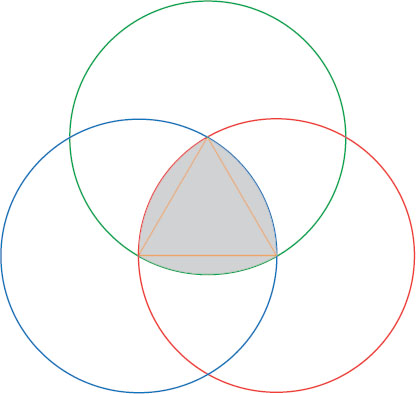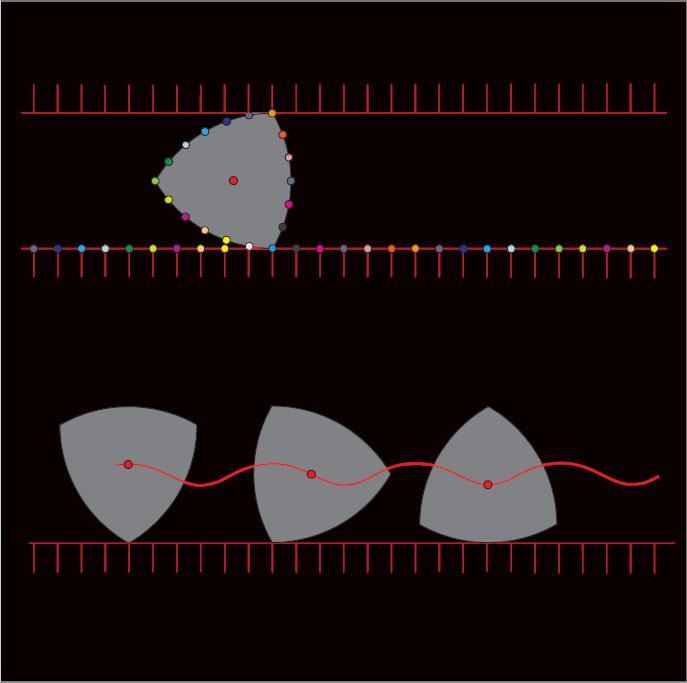The Reuleaux Triangle
Franz Reuleaux (1829–1905), notwithstanding his French-sounding name, was a German scientist and engineer who is regarded as the founder of modern kinematics and machine design. He was born to a family of mechanical engineers and machine builders, an environment that nourished his future interests. He got his formal education at the Karlsruhe Polytechnic School and held his first academic appointment with the Swiss Federal Technical Institute (ETH) in Zurich. In 1864 he became professor at the Royal Industrial Academy in Berlin (later the Royal Technical College), being active as an educator, industrial scientist, and consultant. His views on various technical matters had considerable influence on the subsequent growth of German industry. But during the last years of his life his reputation declined: he was criticized for basing his ideas entirely on kinematic principles—that is, the purely geometric aspects of machinery—while ignoring the even more important dynamic effects of forces and torques.
Reuleaux’s name is mainly remembered today for an idea that would lead to some unexpected practical uses. It all started with a simple geometric construction: with a compass, draw three identical circles, each of radius r and each passing through the centers of the other two (figure 46.1). The overlapping central area is called the Reuleaux triangle. This simple-looking figure has some remarkable properties. For example, the width of the Reuleaux triangle is constant; that is, two parallel tangent lines to the triangle are always separated by a constant distance r, regardless of where we place them (note that one of these tangent lines will always pass through a vertex).

Figure 46.1
This feature, of course, reminds us of the circle, and indeed the two shapes have several properties in common. The circumference of the Reuleaux triangle is πr, the same as the circumference of a circle of diameter r. We can, therefore, regard the radius of the generating circles as the diameter of the Reuleaux triangle.1 A Reuleaux triangle will always fit into a square of side r, a fact that inspired Harry James Watt (a descendant of the English inventor James Watt of steam engine fame) to issue a patent for a drill that could cut square holes (well, almost square: the corners would still be a bit rounded.)2
Because of its constant width, a Reuleaux triangle could be used as a wheel, at least in theory; but a ride on a vehicle using these “wheels” would be anything but smooth, as the axle would wobble up and down three times during each revolution (see plate 46). In Poul Anderson’s science fiction story, The Three-Cornered Wheel (1963), inhabitants of an alien planet are using a noncircular, constant-width object as their means of transportation, since the circle is regarded by them as a religious icon that should not be used for mundane purposes.
The Reuleaux triangle is but one of a large family of constant-breadth curves. It is known that all such curves with the same breadth r also have the same perimeter. Of all the curves in this set, the Reuleaux triangle has the smallest area, whereas the circle has the largest. This remarkable fact was proved in 1916 by the Austrian mathematician Wilhelm Blaschke (1885–1962). Thus, the circle and the Reuleaux triangle occupy the opposite ends of the family of constant-breadth curves.3
NOTES:
1. This analogy, however, does not extend to the triangle’s area, which is ![]() , compared to that of a circle of diameter r, πr2/4.
, compared to that of a circle of diameter r, πr2/4.
2. An animation of this drill can be seen at http://mathworld.wolfram.com/ReuleauxTriangle.html.
3. More on curves of constant breadth can be found in Rademacher and Toeplitz, The Enjoyment of Mathematics, chapter 25.

